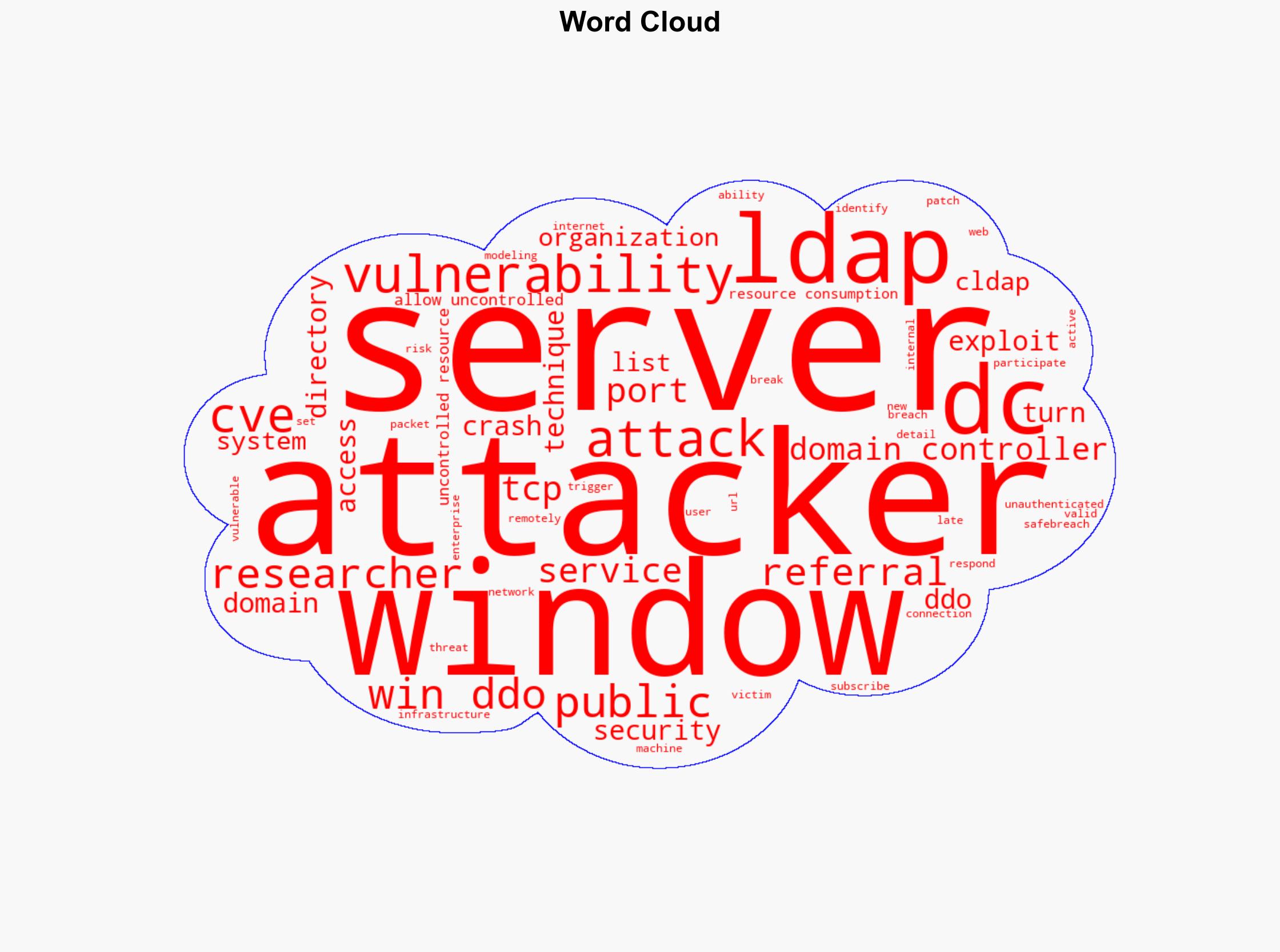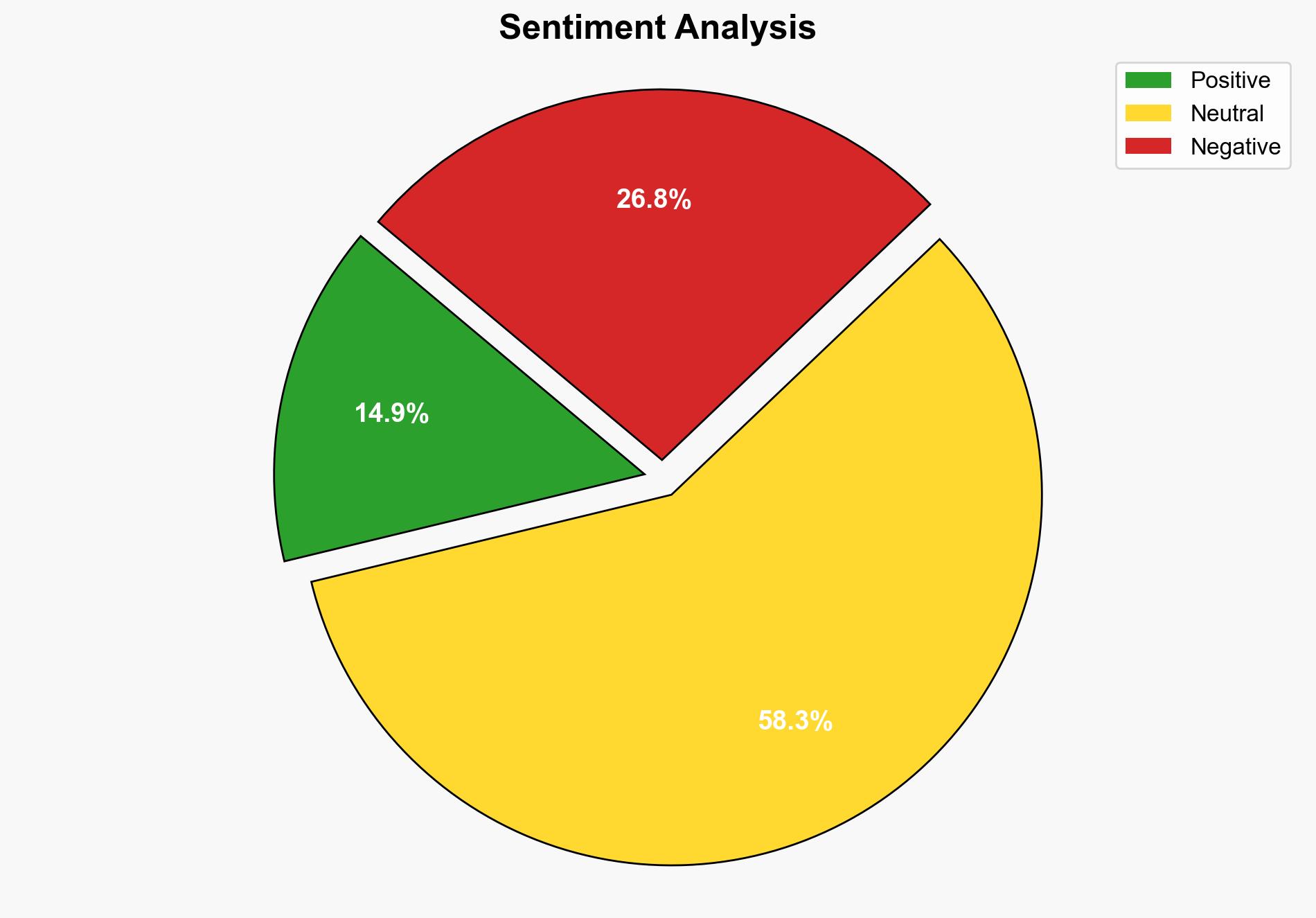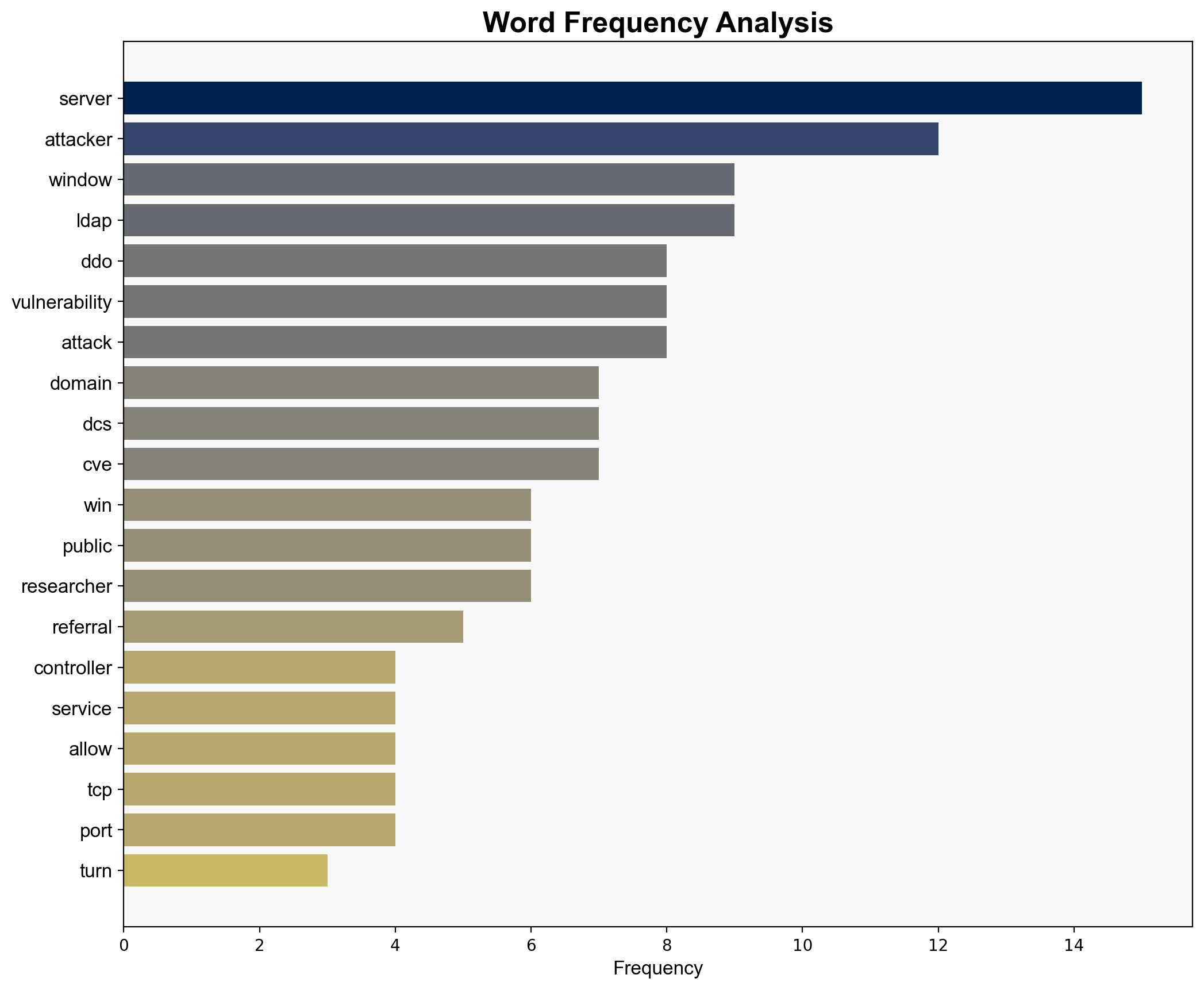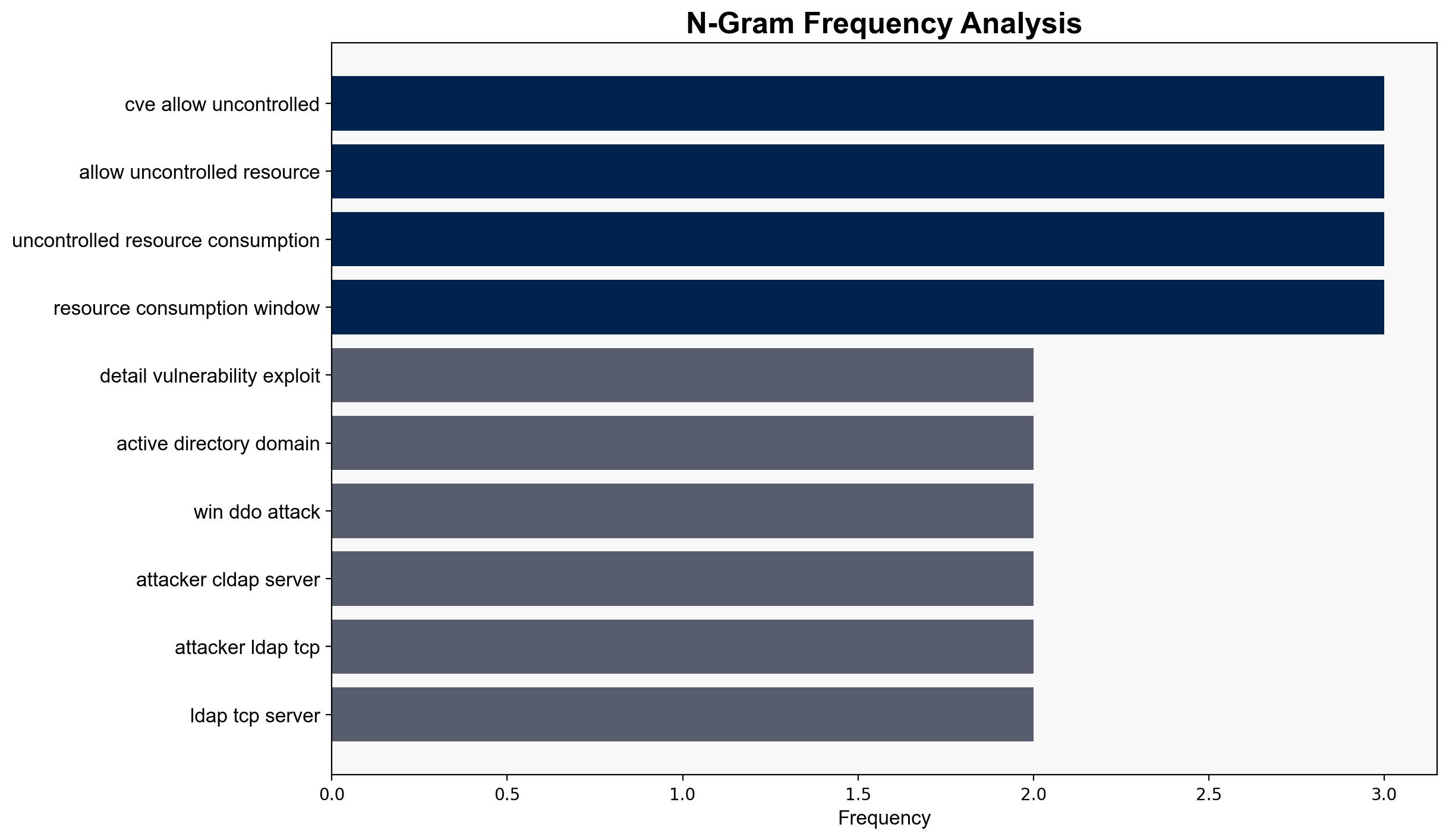Win-DDoS Attackers can turn public domain controllers into DDoS agents – Help Net Security
Published on: 2025-08-11
Intelligence Report: Win-DDoS Attackers can turn public domain controllers into DDoS agents – Help Net Security
1. BLUF (Bottom Line Up Front)
The most supported hypothesis is that attackers can exploit vulnerabilities in Windows domain controllers to orchestrate Distributed Denial of Service (DDoS) attacks, posing a significant threat to enterprise networks. This assessment is made with a moderate confidence level due to the complexity and variability of the attack vectors. Immediate action is recommended to patch vulnerabilities and enhance monitoring of network traffic for unusual patterns.
2. Competing Hypotheses
Hypothesis 1: Attackers are actively exploiting known vulnerabilities in Windows domain controllers to conduct DDoS attacks by leveraging LDAP referral techniques.
Hypothesis 2: The vulnerabilities in Windows domain controllers are not yet widely exploited, and the threat is primarily theoretical at this stage, with limited real-world impact.
Using the Analysis of Competing Hypotheses (ACH) 2.0, Hypothesis 1 is better supported due to the detailed description of the attack technique and the existence of known vulnerabilities (CVE references) that can be exploited. Hypothesis 2 lacks evidence of widespread exploitation but cannot be entirely dismissed due to the potential for rapid escalation.
3. Key Assumptions and Red Flags
Assumptions include the belief that all organizations have not yet implemented the necessary patches and that attackers have the capability to exploit these vulnerabilities effectively. A red flag is the assumption that internal systems are inherently safe from public-facing threats, which the report challenges. The lack of specific data on the frequency and scale of current attacks is a blind spot.
4. Implications and Strategic Risks
The exploitation of these vulnerabilities could lead to significant disruptions in enterprise operations, economic losses, and damage to organizational reputations. There is a risk of cascading effects if attackers use compromised systems to launch further attacks. Geopolitically, this could strain relations if state-sponsored actors are involved. Psychologically, the threat could erode trust in digital infrastructure.
5. Recommendations and Outlook
- Organizations should immediately apply available patches to mitigate known vulnerabilities.
- Enhance network monitoring to detect unusual LDAP traffic patterns indicative of exploitation attempts.
- Conduct regular security audits and penetration testing to identify and address potential vulnerabilities.
- Scenario-based projections:
- Best Case: Rapid patch deployment and increased awareness prevent widespread exploitation.
- Worst Case: Delayed response leads to significant DDoS attacks, causing major disruptions.
- Most Likely: Mixed response with some organizations effectively mitigating the threat while others remain vulnerable.
6. Key Individuals and Entities
Yair Shahak and Morag, researchers from SafeBreach, are key individuals who have identified and reported these vulnerabilities.
7. Thematic Tags
national security threats, cybersecurity, counter-terrorism, regional focus





